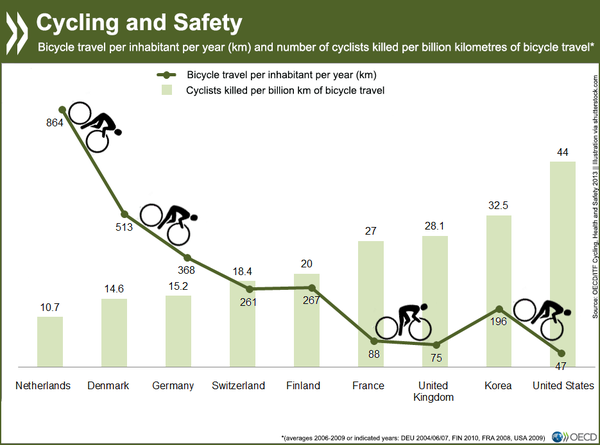
The more people get around by bike, the safer it is, according to the "safety in numbers" rule first popularized by researcher Peter Jacobsen.
This chart from the International Transport Forum [PDF] shows how the safety in numbers effect plays out at the national scale. As you can see, biking is safer in the countries where people bike the most.
There was, however, some variation country to country. The report noted that Korea's cycling fatality rates were greater than what its biking rates would suggest. Researchers speculated that might be due to a rapid recent growth in cycling. Perhaps, they write, "neither cyclists nor other transport participants have had time to assimilate each other's presence."
Meanwhile, in some nations with high cycling rates, biking has become even safer over time. That was the case in Denmark, where cycling rates have been high but fairly stable for the last decade, but fatality rates have dropped 40 percent during the same period.
The safety in numbers effect has been observed at the scale of cities too. Recently, for example, bicycle injury rates in Minneapolis have declined as total ridership has risen. The same trend has played out in New York, as cycling has increased while total injuries and fatalities have not.
Do more people on bikes cause cycling to become safer, or does safer infrastructure attract more people to bike? There's no conclusive evidence either way, but the answer is probably a mix of both. Safer infrastructure entices more people to ride, and more people riding instill greater awareness on the part of motorists and increase the demand for safer infrastructure.





